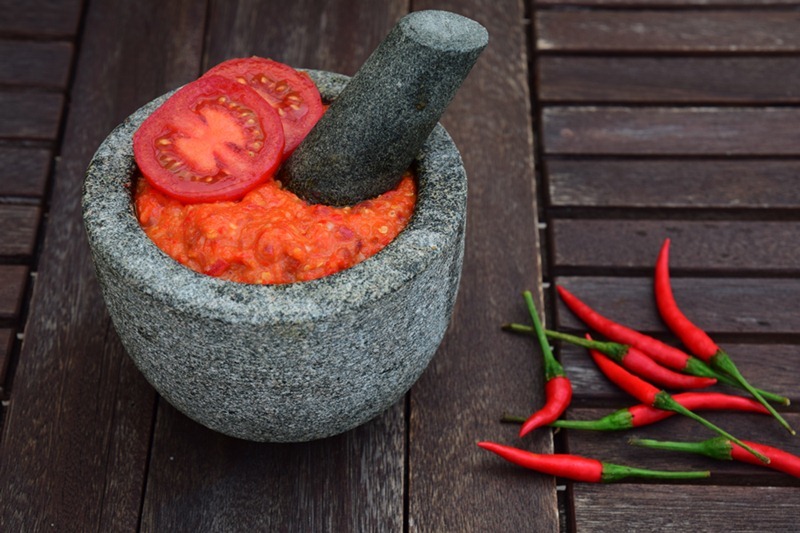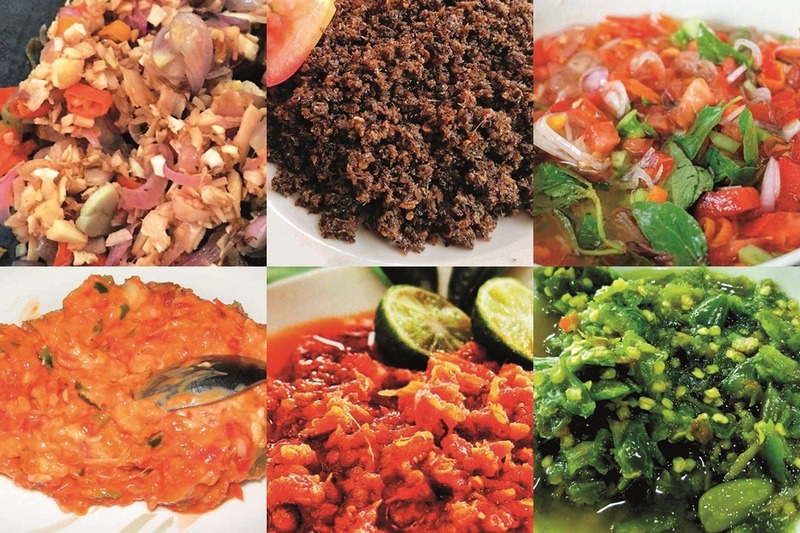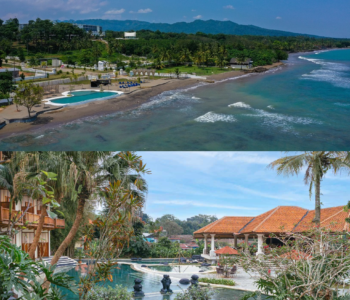Sambal, loosely translated to English is a chilli-based ‘relish’ is an integral part of the Indonesian palate. Home to more than 300 ethnic groups, or 1,340 tribes, Indonesia features a range of cuisine — including varieties of sambal.

Research from Gadjah Mada University indicates that there are at least 322 types of sambal across Indonesia, 257 of them are used in various dishes. There are 199 types that are raw and 138 types cooked. Although the variety reaches those numbers, there are only 122 variations of spices. Sambal’s main ingredients consist of chili, salt and shrimp paste, while many varieties include onions, garlic, coconut, sugar and oil. Here, are some of unique and typical Indonesian sambal that one must taste!
Sambal Roa
This Minahasan or Manadonese (people from North Sulawesi) sambal is made from shredded roa, smoked fish that is made from julung-julung or halfbeak fish which are found in the Celebes sea. Tiny pieces of fish are stir friend along with chilies, chopped tomatoes, garlic and shallot and a simple seasoning of salt, pepper and sugar. In the region, this sambal is enjoyed with fried cassava.
Sambal Tempoyak
Tempoyak is fermented durian and is found in the province of Sumatra. This sambal was an accidentally discovery, thanks to a large number of durian that were overripe and began to ferment. It is usually consumed as a side dish and also as a cooking ingredient. Sambal tempoyak is creamy and is usually combined with seafood, crab and salty fish.
Sambal Tumpang
Javanese people are believed to be the largest consumers of tempeh (soybean cake) in Indonesia. As such there is a type of sambal which uses tempeh as one of the ingredients. Tempeh semangit or old tempeh is used here. In Central Java, it is mixed with other protein such as beef or tofu and vegetables. In East Java, this sambal is made with a combination of 75 per cent old tempeh and 25 per cent fresh tempeh and eaten with Javanese salad or pecel with peanut sauce.

Sambal Kaluku
South Sulawesi has sambal kaluku, mostly found in the capital city of Makassar. As the main flavour trigger, it uses ikan gabus or snakehead fish, along with toasted, grated young coconut, chopped red chili, shallot, garlic, lime leaves, celery, salt and sugar. It is paired with rice or a South Sulawesi rice cake, buras.
Sambal Bongkot
It’s an authentic condiment for the Balinese people, especially to all Balinese home cooking. Bongkot is the Balinese word for torch ginger, also known as kecombrang elsewhere in Indonesia. It’s a very simple sambal to make where one needs to slice torch ginger, shallot and bird’s eye chilies, and mix it with salt and shrimp paste to taste and fry on medium heat until the ginger has wilted. It can be served with fried or grilled seafood, fried tofu and tempeh.
Sambal Parado
From West Nusa Tenggara, this type of sambal is for those who have a very high tolerance for spices as it uses a red chilli from the region. It has a sweet and sour taste from the addition of lime which is thinly sliced and soaked in boiled water for an hour and mixed with chili, salt, sugar and lime peel. Sambal parado is a condiment for grilled or fried fish.
Sambal Lado Mudo
Definitely the most famous chili relish from Padang cuisine. If you order a rice meal in any Padang restaurant, this sambal is almost always guaranteed to be included. This sambal only uses green serrano chilies or lado mudo crushed with green tomato, shallot, garlic, kaffir lime leaves and is stir-fried in coconut oil. It is usually mixed with crisp-fried anchovies. It may look like a green mess, but once you’ve tasted it, you’ll want to have it with every meal!
Sambal Colo-Colo
There is no feast in the eastern part of Indonesia (Sulawesi, Moluccas and Papua) without this sambal. The ingredients include sliced cayenne pepper, shallot, and tomato which are all mixed. Boiled water and sweet soy sauce (kecap manis), margarine, salt and lime juice are then added. The fresh taste is best enjoyed with local favourites, sauteed water spinach or papaya flower and various fish dishes.
Over the years, Sambal has migrated to other regions, thanks to various factors. The dish is, in many senses, multi-national with variants found in Malaysia and in Sri Lanka where it’s served alongside the ubiquitous curry. It’s roots, however, remain solidly Indonesian and add a depth of flavour with its unmatched, unique combinations.
_______
This article is originally from paper. Read NOW!Jakarta Magazine October 2018 issue“A Jakarta Smorgasbord”. Available at selected bookstore or SUBSCRIBE here.







